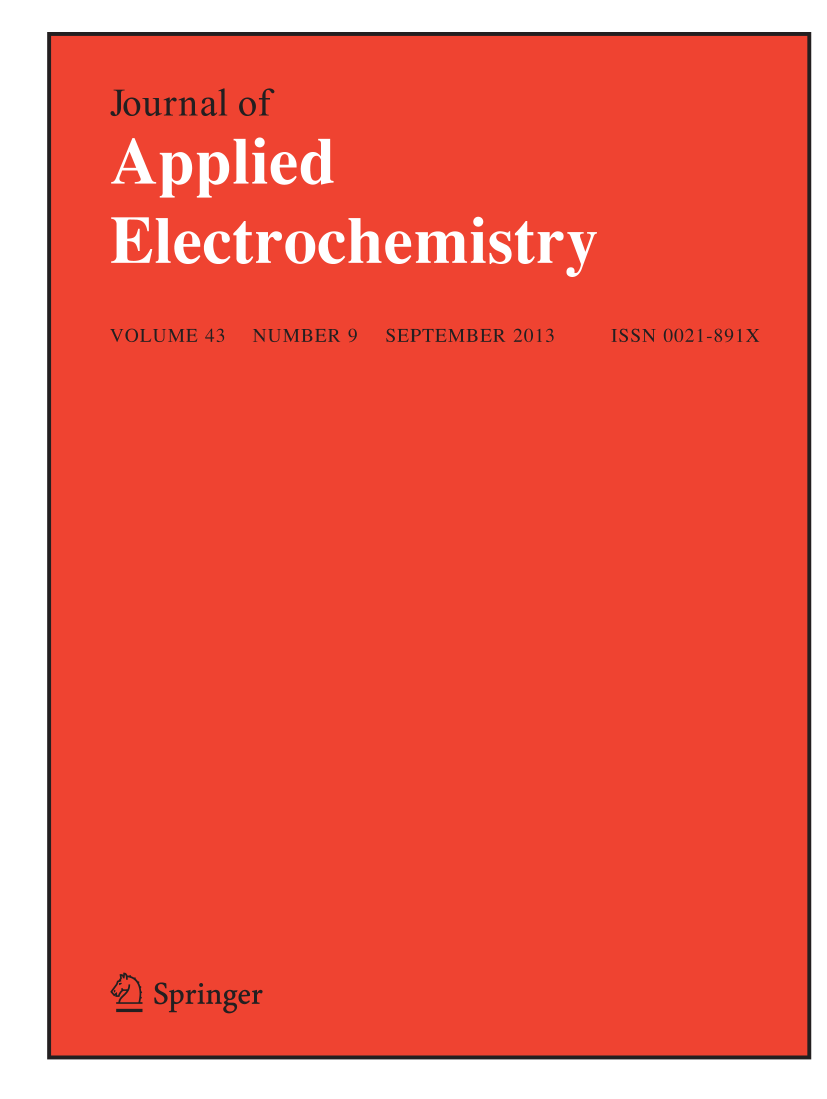Metal oxide stabilized zirconia modified bio-derived carbon nanosheets as efficient electrocatalysts for oxygen evolution reaction
IF 2.4
4区 工程技术
Q3 ELECTROCHEMISTRY
引用次数: 0
Abstract
Abstract Zirconia is a promising candidate for many applications, especially when stabilized with metal oxide nanoparticles such as yttria and ceria. Zirconium oxide-based materials supported on carbon nanomaterials have shown excellent performance electrocatalysts due to their outstanding catalytic activities and high stability. In this work, a one-pot hydrothermal method was used to prepare porous stabilized zirconia nanoparticles with yttria and ceria (YSZ and CSZ) anchored on carbon nanosheets derived from molasses fiber waste as a sustainable source and annealing at various temperatures (MCNSs). The prepared composites YSZ/MCNSs and CSZ/MCNSs exhibit superior oxygen evolution reaction performance in alkaline medium. Various physicochemical analysis techniques such as SEM, EDX, HR-TEM, BET, XRD and XPS are employed to characterize the designed catalysts. The results showed that the doping of molasses fibers exfoliated into 2D nanosheets controlled the growth of the YSZ particles into the nanosize and increased their crystallinity. This improves the electrochemical surface area and stability, and modulates the electronic structure of zirconium, yttrium and cerium which facilitate the adsorption of OH − ions, and all contribute to the higher catalytic activity. Graphical Abstract金属氧化物稳定氧化锆修饰生物源碳纳米片作为析氧反应的高效电催化剂
摘要氧化锆是一个很有前途的候选者,在许多应用中,特别是当与金属氧化物纳米粒子如钇和铈稳定时。碳纳米材料负载的氧化锆基材料由于其优异的催化活性和高的稳定性而表现出优异的电催化剂性能。在这项工作中,采用一锅水热法制备了多孔稳定的氧化锆纳米颗粒,其中钇和铈(YSZ和CSZ)固定在糖蜜纤维废料的碳纳米片上,作为可持续来源,并在不同温度下退火(MCNSs)。制备的YSZ/MCNSs和CSZ/MCNSs复合材料在碱性介质中表现出优异的析氧性能。采用SEM、EDX、HR-TEM、BET、XRD、XPS等多种理化分析技术对所设计的催化剂进行了表征。结果表明,糖蜜纤维剥离成二维纳米片的掺杂控制了YSZ粒子向纳米级的生长,提高了其结晶度。这提高了电化学的表面积和稳定性,并调节了锆、钇和铈的电子结构,有利于OH -离子的吸附,从而提高了催化活性。图形抽象
本文章由计算机程序翻译,如有差异,请以英文原文为准。
求助全文
约1分钟内获得全文
求助全文
来源期刊

Journal of Applied Electrochemistry
工程技术-电化学
CiteScore
4.70
自引率
3.40%
发文量
133
审稿时长
2.9 months
期刊介绍:
The Journal of Applied Electrochemistry is the leading journal on technologically orientated aspects of electrochemistry. The interface between electrochemical science and engineering is highlighted, emphasizing the application of electrochemistry to technological development and practice, and documenting properties and data of materials; design factors, design methodologies, scale-up, economics and testing of electrochemical devices and processes. The broad range of technologies includes energy conversion, conservation, and storage, new battery systems, fuel cells, super capacitors, solar cells, power delivery, industrial synthesis, environmental remediation, cell design, corrosion, electrochemical reaction engineering, medical applications of electrochemistry and bio-electrochemistry, the electrochemical treatment of effluents, hydrometallurgy, molten salt and solid state electrochemistry, surface finishing, electroplating, electrodeposition, sensors, and applications of molecular electrochemistry. It also publishes invited reviewed articles, book reviews and news items and a comprehensive electrochemical events calendar.
 求助内容:
求助内容: 应助结果提醒方式:
应助结果提醒方式:


